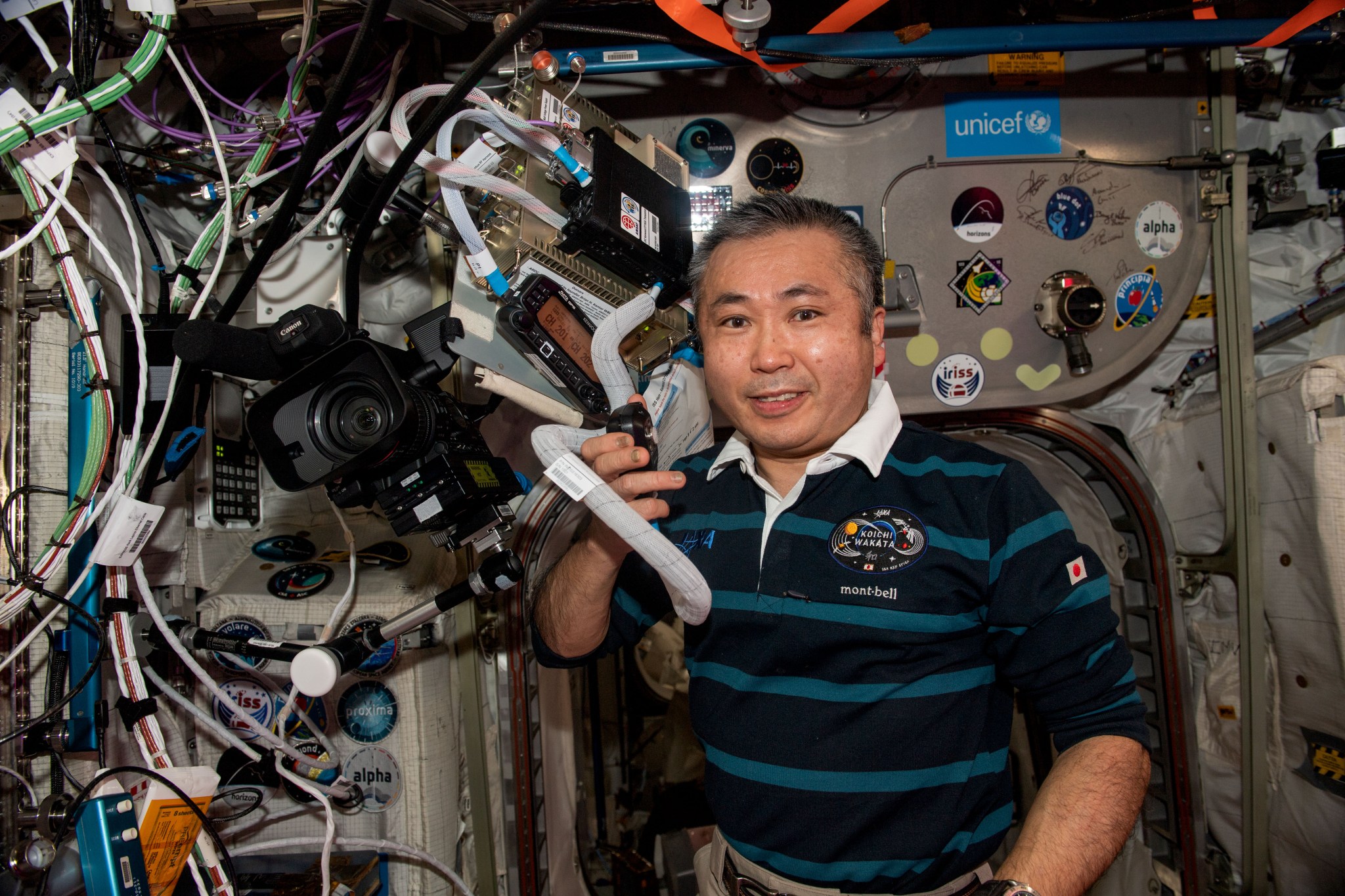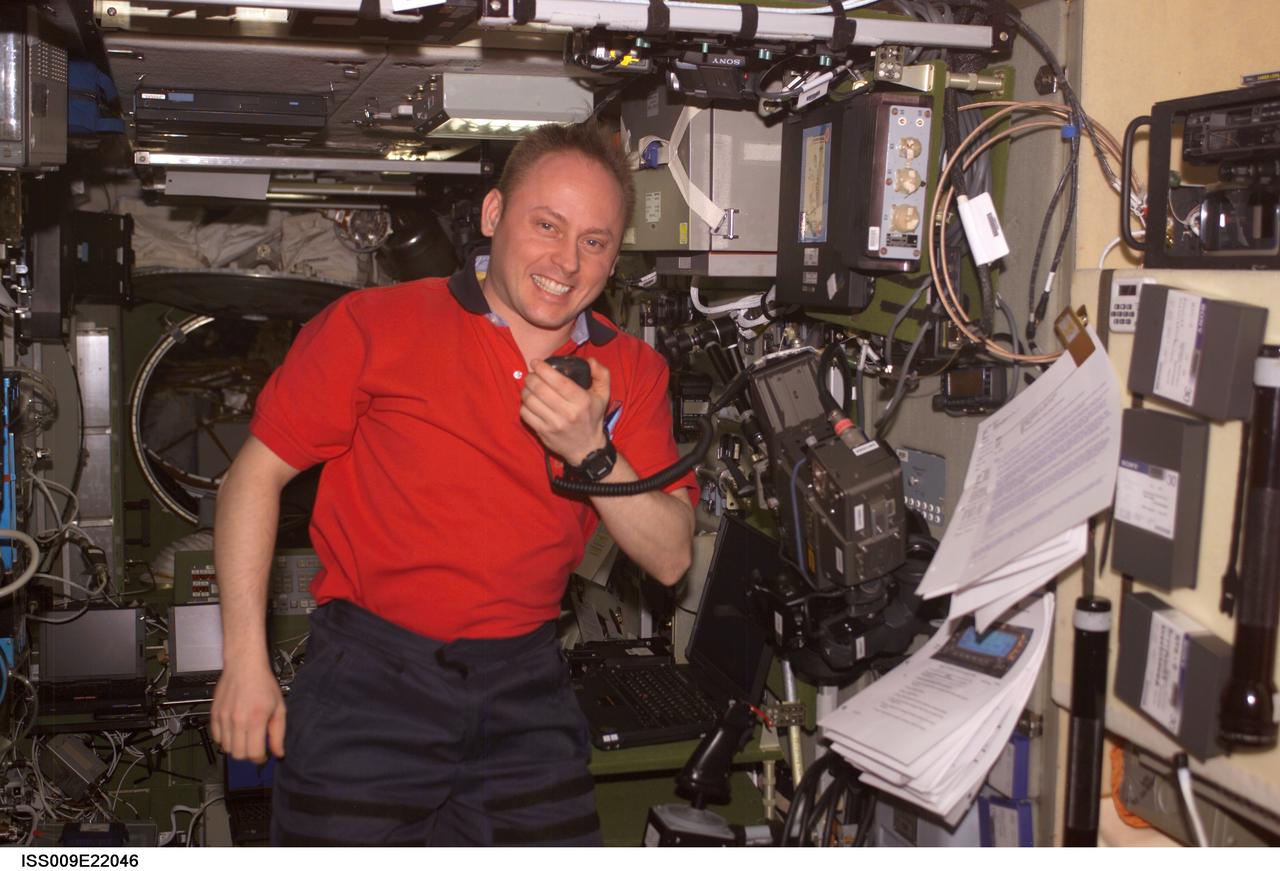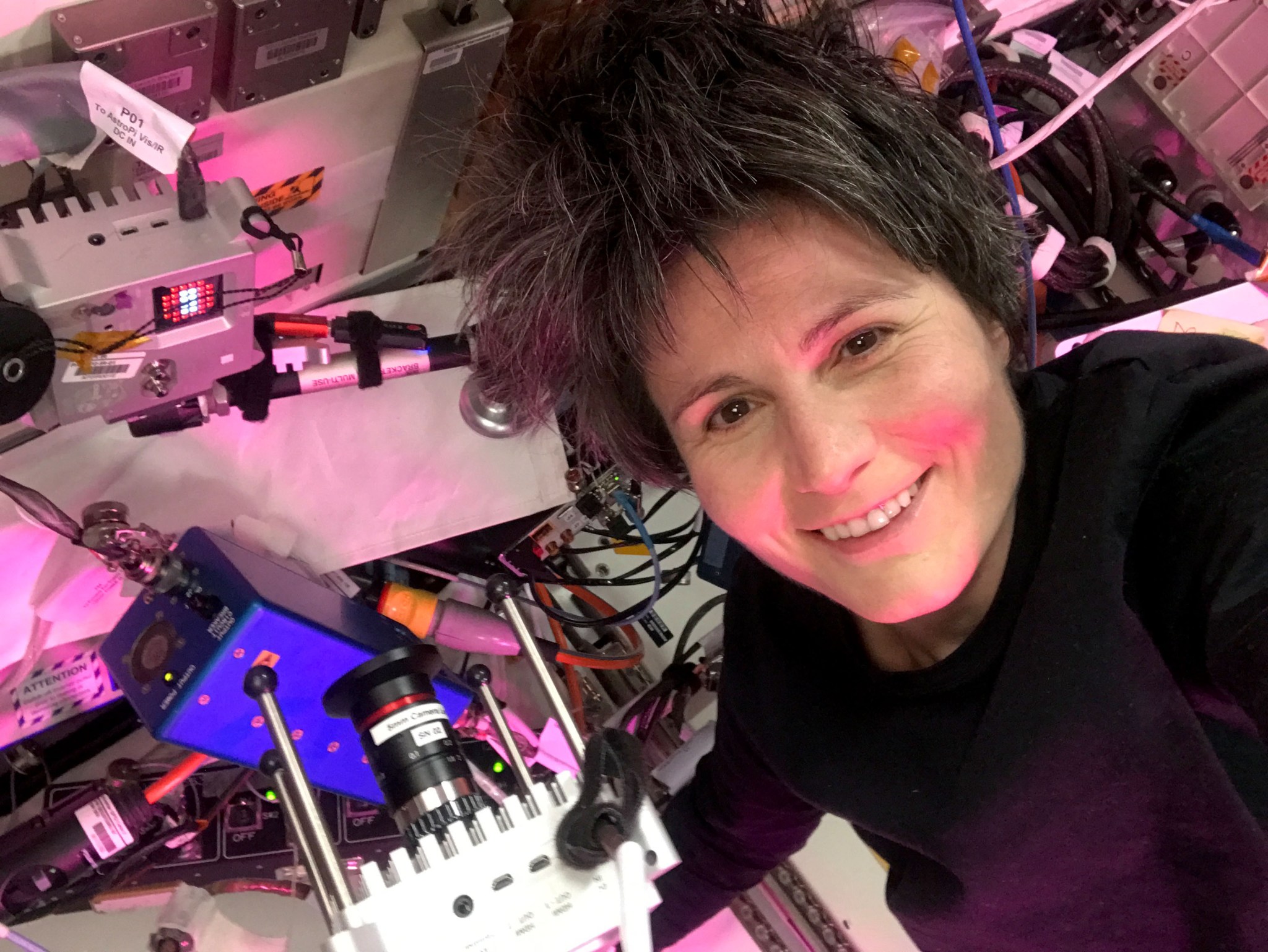Science on Station: November 2023
As an orbiting microgravity laboratory, the International Space Station hosts experiments from almost every scientific field. It also is home to educational programs to encourage young people worldwide to study science, technology, engineering, and mathematics (STEM). These programs aim to inspire the next generation of space scientists and explorers and experts who can solve problems facing people on Earth.
The first and longest running educational outreach program on the space station is ISS Ham Radio. An organization known as Amateur Radio on the International Space Station, or ARISS, helps run the program. ARISS is a partnership between NASA, the American Radio Relay League, the Radio Amateur Satellite Corporation, amateur radio organizations, and multiple international space agencies. Students use amateur or ham radio to talk with astronauts, asking them questions about life in space, career opportunities, and other space-related topics. Three contacts with schools in Australia and Canada were scheduled during the month of November 2023.
Before a contact, students help set up a ground radio station and study radio waves, space technology, the space station, geography, and the space environment. Contact events have been held with schools from kindergarten through 12th grade, universities, scout groups, museums, libraries, and after school programs, and at national and international events. Approximately 15,000 to 100,000 students are involved directly each year and thousands more people in their communities witness these contacts directly or through the news media.
Rita Wright, a teacher at Burbank School in Burbank, IL, one of the first to have a contact with the space station, reported on the extensive study and preparation by the students there.1 She noted that their contact was “an interdisciplinary learning experience for all grades across a variety of academic concentrations that included math, science, reading, writing and art…. The transformation that took place was quite revolutionary. We came closer together as a school.” Students talked extensively about the experiment and parents pitched in and helped because they sensed how special the event was and wanted to be a part of it.
Wright adds that ripple effects continued long after the December 2000 contact with astronaut William Shepherd. Staff members were inspired to look for other interdisciplinary projects and many students talked about pursuing careers associated with the space industry.
After a contact at Sonoran Sky Elementary School in Scottsdale, AZ, teacher Carrie Cunningham reported that the students started an after-school Amateur Radio Club and that, “sparked by the excitement of the ARISS contact, many students have shown an interested in pursuing their own Amateur Radio experience.”2
“There is a sense of accomplishment that results from the school and the students setting up and conducting the ISS ham contact themselves,” Cunningham reported. “The students better understand how NASA and the other international space agencies conduct science in space. The unique, hands-on nature of the amateur radio contact provides the incentive to learn about orbital mechanics, space flight, and radio operations.”
In a 2018 conference presentation, members of the ARISS staff noted that the program and its predecessors have jump-started countless careers, touched millions of people from all walks of life, and even become local and international phenomena. Participants have ranged from disadvantaged students to heads of states, and the program has been mentioned in IMAX films, numerous television shows, and commercials.3
A group of educators from Australia recently looked at how ham radio affected student interest in STEM subjects. They found that the program has a significant and positive impact on students and that interest in all STEM areas increases as a direct result of contacts.4
That research also reported a strong belief among teachers that astronauts provide outstanding examples of role models for their students. While the greatest changes in student interests occurs with primary school age students, the program also creates strong change in the interests of high school students.
Patricia Palazzolo was the coordinator for gifted education in the Upper St. Clair School District in Pennsylvania during a 2004 contact with NASA astronaut Mike Fincke. She wrote a report about the event, noting that the positive impact of the program goes far beyond the numbers. “All of my students who have participated … have gone on to phenomenal accomplishments and careers that contribute much to society. Almost all have opted for careers in science, technology, or science-related fields.”
Ham radio experiences help students make real-world connections among disciplines, teach problem-solving under the pressure of deadlines, hone communication skills, and illustrate the importance of technology.5 For the adults involved, contacts highlight the significance of sharing skills with others and provide an opportunity to model the power of passion, partnership, and persistence.
AstroPi is an educational program from ESA (European Space Agency) where primary and secondary school students design experiments and write computer code for one of two Raspberry Pi computers on the space station. The computers are equipped with sensors to measure the environment inside the spacecraft, detect how the station moves through space, and pick up the Earth’s magnetic field. One of them has an infrared camera and the other a standard visible-spectrum camera.
One student project used the visible camera to observe small-scale gravity waves in different regions in the northern hemisphere.6 Atmospheric gravity waves transport energy and momentum to the upper layers of the atmosphere. These phenomena can be detected by visual patterns such as meteor trails, airglow, and clouds.
YouTube Space Lab was a world-wide contest for students ages 14 to 18 to design an experiment about physics or biology using video. Two proposals were selected from 2,000 entries received from around the world. One of those documented the ability of the Phidippus jumping spider to walk on surfaces and make short, direct jumps to capture small flies in microgravity.7
Other space station facilities that host student-designed projects include CubeSat small satellites, TangoLab, the Nanoracks platform, and Space Studio Kibo, a JAXA (Japan Aerospace Exploration Agency) broadcasting studio.
NASA is committed to engaging, inspiring, and attracting future explorers and building a diverse future STEM workforce through a broad set of programs and opportunities. The space station is an important part of that commitment.
John Love, ISS Research Planning Integration Scientist
Expedition 70
Search this database of scientific experiments to learn more about those mentioned above. Space Station Research Explorer.
Citations:
- Wright RL. Remember, We’re Pioneers! The First School Contact with the International Space Station. AMSAT-NA Space Symposium. Arlington, VA. 2004 9pp.
- Cunningham C. NA1SS, NA1SS, This is KA7SKY Calling…… AMSAT-NA Space Symposium, Arlington, VA. 2004
- Bauer F, Taylor D, White R. Educational Outreach and International Collaboration Through ARISS: Amateur Radio on the International Space Station. 2018 SpaceOps Conference, Marseille, France. 2018 28 May – 1 June; 14 pp. DOI: 10.2514/6.2018-2437.
- Diggens, M., Williams, J., Benedix, G. (2023). No Roadblocks in Low Earth Orbit: The Motivational Role of the Amateur Radio on the International Space Station (ARISS) School Program in STEM Education. Space Education & Strategic Applications. https://doi.org/10.18278/001c.89715
- Palazzolo P. Launching Dreams: The Long-term Impact of SAREX and ARISS on Student Achievement. AMSAT-NA Space Symposium, Pittsburgh, PA. 2007 18pp.
- Magalhaes TE, Silva DE, Silva CE, Dinis AA, Magalhaes JP, Ribeiro TM. Observation of atmospheric gravity waves using a Raspberry Pi camera module on board the International Space Station. Acta Astronautica. 2021 May 1; 182416-423. DOI: 10.1016/j.actaastro.2021.02.022
- Hill DE. Jumping spiders in outer space (Araneae: Salticidae). PECKHAMIA. 2016 September 17; 146(1): 7 pp.

































